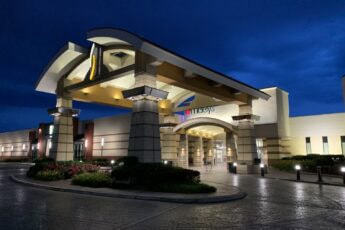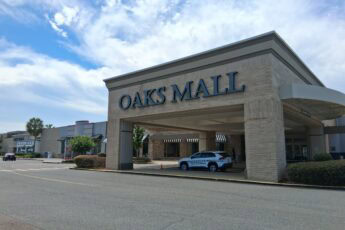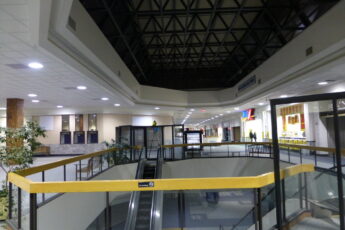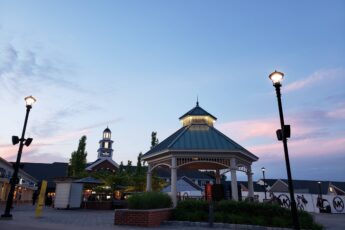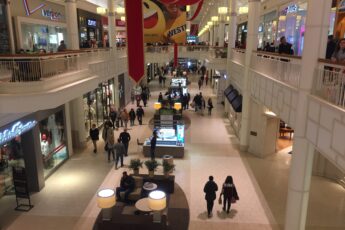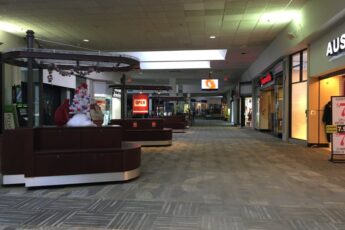Origins and Initial Development
In the early 1960s, developer Gerri Von Frellick planned a large shopping center near Denver, Colorado. He proposed building it on the property of KLZ (560 AM) radio tower. The local community strongly opposed the development due to concerns about increased traffic and disruptions.
The zoning board rejected his proposal. Looking for alternatives, Von Frellick turned to Englewood, a nearby suburb. He targeted a 60-acre park across from Englewood City Hall and the public library.
The city council approved the project, trading the park for commercial development. This decision aligned with Englewood's push for increased retail activity. Von Frellick named the project "Cinderella City," which faced resistance from local officials.
After months of debates, the name was finalized as "New Englewood: The Cinderella City." However, just a few months after the grand opening, they again shortened it to simply "Cinderella City."
Construction started in 1965. The area had once been a landfill, which led to complications. Soil erosion and instability slowed the project. Engineers had to drive large concrete pillars deep into the ground to stabilize the structure. By 1968, the 1.35 million square foot mall was nearly complete.
Anchored by department stores like JCPenney and Montgomery Ward, the mall was poised to become a retail hub. The mall officially opened on March 7, 1968. Over 20,000 people attended the opening, marking the start of what would be an important chapter in Englewood's retail history.
A second grand opening took place weeks later when the remaining stores completed construction. The opening celebrations set the tone for a mall that aimed to reshape shopping patterns in the region.
Architectural Features and Layout
Cinderella City's design set it apart from other malls of its era. Its unusual "M" layout included four retail sections, each with a different theme - Rose Mall, Shamrock Mall, Gold Mall, and Cinder Alley.
Each section had its own atmosphere and retail mix. Rose and Gold Malls focused on traditional department stores and popular retail chains. Shamrock Mall and Cinder Alley, located in the basement, provided a more eclectic experience.
Cinder Alley mimicked a New York street with storefronts, black ceilings, and faux streetlights, giving shoppers an urban feel within suburban Englewood.
The central court, known as Blue Mall, became the focal point for events and promotions. A large 35-foot fountain, activated during the opening ceremonies, stood as a central visual attraction.
A movie theater anchored the southwest side nearby. The cinema's unique design, with exterior arches and an independent entrance, contributed to its draw as a local entertainment venue.
Cinderella City's layout also included a sophisticated parking system. The design featured underground parking with direct access to the mall, as well as multi-level garages. These conveniences made shopping trips smoother, especially during peak periods when over 14,000 parking spots filled up quickly. The commercial real estate strategy focused on efficient customer flow, leveraging multiple access points and clear zoning for different types of stores.
The mall's original design innovations reflected the priorities of the late 1960s and, as the first retail complex of its kind in Englewood, Cinderella City laid the foundation for future suburban malls in Colorado.
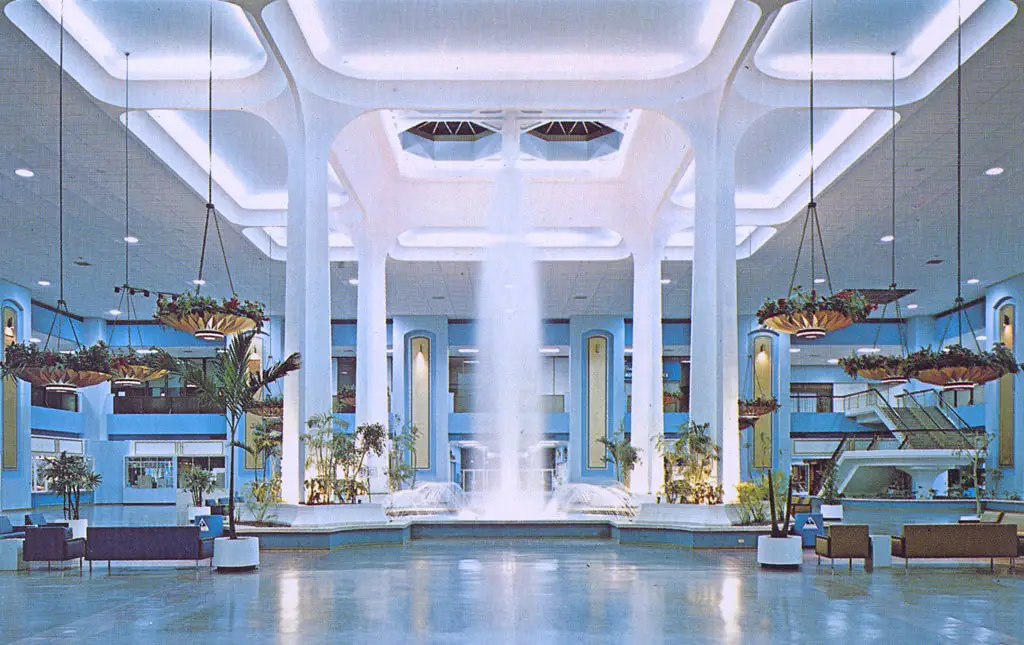
Cinderella City: Peak Success in the 1970s
In the early 1970s, Cinderella City thrived as a retail giant. Shoppers regularly filled its 14,000 parking spaces, and the mall's varied sections provided something for everyone.
During this decade, the mall became more than just a shopping destination; it hosted events and public art displays. Guy "Yug" London, a local artist, showcased his surrealistic paintings in the center court. Shoppers could watch him work and purchase his art.
Retail space at Cinderella City was in high demand. The management received numerous leasing applications, though many had to be turned away due to the mall's full occupancy.
However, success came with challenges. The mall's rapid growth revealed structural issues. Cracks in the pillars supporting the JCPenney building forced management to temporarily shut down parts of the mall for repairs.
Even with these problems, the mall's foot traffic stayed strong. New attractions like the renovated cinema, which split into two screens, kept visitors engaged and helped maintain its position as a retail hub.
Renovation and Competition in the 1980s
By the middle 1980s, Cinderella City faced new competition from other regional malls like Southwest Plaza and Cherry Creek Mall. Management responded with a major renovation from 1981 to 1984.
The renovation aimed to modernize the mall and keep it relevant against newer shopping centers. They replaced the original concrete floors with parquet flooring, added skylights, and introduced a food court.
The fountain and automobile underpass in Blue Mall were removed, simplifying the layout but changing the mall's original character.
The renovation updated the southwest anchor by replacing Neusteter's with the upscale Broadway Southwest, which later transitioned to May D&F and eventually Foley's.
Despite the improvements, competition kept increasing. Southwest Plaza attracted shoppers with its new stores, while Cherry Creek Mall revamped itself with luxury retailers.
The changes also had a downside. Cinder Alley, once known for its quirky shops and counterculture vibe, lost its character during the renovation.
Many original stores, like head shops and arcades, closed or relocated, leaving Cinder Alley mostly vacant, stripping away one of Cinderella City's unique attractions.
While the renovations helped in the short term, the mall struggled to adapt fully to the growing pressures from other, newer malls.
Decline and Closure in the 1990s
By the middle 1990s, Cinderella City's once-vibrant corridors began to fade. Competition from malls like Park Meadows, which offered newer designs and upscale stores, led to declining foot traffic.
The first major hit came in 1994 when Foley's, the southwest anchor, closed its doors. JCPenney followed shortly after, leaving large portions of the mall empty. These closures signaled the beginning of Cinderella City's end.
As anchor stores left, smaller retailers struggled to stay afloat. The Gold Mall and Cinder Alley sections were shut off entirely as the remaining tenants vacated. Joslins, another anchor that had been a fixture since the mall's early days, relocated to Southglenn Mall in 1995.
The situation became dire as more storefronts were gated up, and by 1997, only Montgomery Ward remained. When Montgomery Ward finally ended its lease in December 1997, Cinderella City effectively ceased operations.
The mall's decline left the city of Englewood with a large, empty complex. For two years, the site sat unused while various redevelopment proposals were considered and rejected.
Englewood faced the challenge of finding a new purpose for the massive space that had once been a cornerstone of local commerce.
Redevelopment and Transformation (1998-2004)
After years of uncertainty, Englewood adopted a final plan in 1998 to redevelop the former Cinderella City site into a transit-oriented development. The introduction of a Regional Transportation District (RTD) light rail station played a key role in reshaping the area.
Demolition began in late 1998, but environmental concerns, including asbestos and lead contamination, slowed progress. The demolition process involved specialized equipment to handle hazardous materials, which complicated and extended the timeline.
The transformation replaced the mall with a mixed-use "downtown" area featuring residential units, stores, and new public spaces.
The only remaining part of the original mall was the former Foley's building, which was repurposed into the Englewood Public Library and City Hall. By 2004, the area had fully transitioned into a thriving community center with a focus on walkability, retail, and public services.
Cinderella City's story offers a glimpse into the broader shifts in suburban retail. The mall's rise and fall reflect the impact of changing consumer behavior, increased competition, and the challenges of repurposing large commercial sites.
While the physical mall no longer exists, its legacy continues through Englewood's modern downtown, shaped by the lessons learned from this ambitious but ultimately short-lived retail venture.
In June 2024, the Historic Englewood Museum opened a new exhibit dedicated to Cinderella City. The exhibit provides an immersive experience with large-scale photographs, mall artifacts, and interactive displays.
The museum's opening marks the latest in a series of efforts by Englewood to celebrate its retail history. Visitors can explore everything from the mall's original architectural plans to lesser-known facts about its rise and fall.


